Conn 16 Student Clarinet
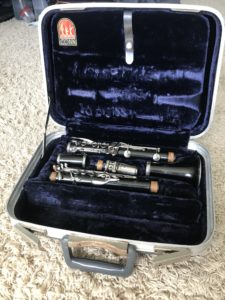
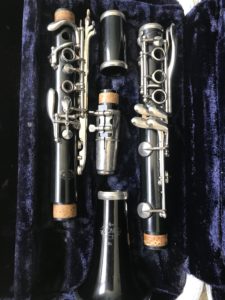
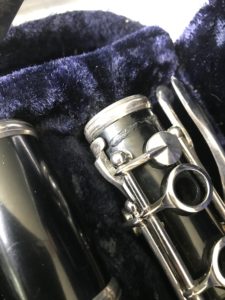
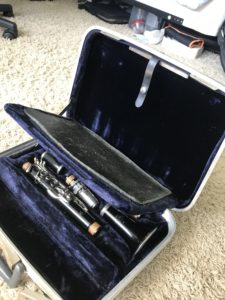
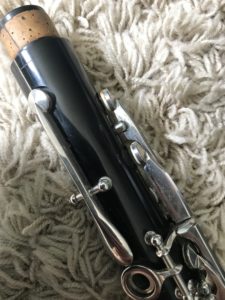
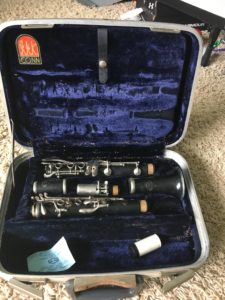
Introduction: I got this clarinet from someone who was going to throw it in the trash and they had a good reason to do so. As you can see in the pictures, the horn was disgusting and the center tenon on the lower joint had stepped in half. I was not told how this happened, but I guess that it was stepped on in marching band or something like that. Not to mention, it had no pads and it was covered and dirt and dust, and the original case smelled strongly of mildew. It came to me with the original case, a molded book which I discarded, the original Conn Precision mouthpiece and ligature combo, and some vintage reeds which were also promptly discarded. Because it was destined for the garbage anyway, I thought I would take it and attempt to fix it. I really had nothing to loose, and I could potentially use it for parts if the restoration went poorly. I started by gluing the broken tenon back on and while I know this is not the proper way to do this, it did work and saved a clarinet which would have been trashed otherwise. After this a set of pads and a good cleaning got this horn playing again and I am happy to have saved it from scrap.
General Info: This is a plastic student model clarinet made by C.G. Conn in the 1960s. The Conn 16 is no longer manufactured and the Conn brand is now owned by Conn-Selmer.
Playability and Tuning: Having never owned a Conn clarinet before, I was excited to give this thing a thorough playing with my Vandoren BD5 13. I found that it was pretty average in its responsiveness overall. It wasn’t terrible, but it wasn’t mind-blowing either and the resistance it had was almost welcome as it was nice having something to push against. The sound was a lot more centered and quite a bit darker when compared to some of the other student horns I own, and it was a lot harder to spread on this clarinet when playing loud which I liked a lot. There were a couple of stuffy notes, particularly low c#, some of the side trill keys, and oddly enough low G was a bit stuffy which I have never encountered before. Intonation is kind of interesting with this horn, as in the typical student horn fashion it tends to play a bit sharp in the lower register, but with the right mouthpiece and some adjustment it is quite manageable. The horn plays well in tune with itself and it is consistent pretty across all of the registers as well and I feel like it has more consistent intonation then some of my other student horns. It also has a larger bore than some of the other student horns I have, which I believe contributes to its playing characteristics as well.
Construction and Build Quality: The body of this horn is quite hefty and the instrument is pretty heavy when compared to other student horns, especially newer ones. Everyone who has held this instrument has commented on how heavy it is. The bell also flares out quite a bit compared to my Bundy and Vito horns and features the bell ring which is cosmetically pleasing to see on student horns. Overall the horns body seems to be constructed well and seems like it could take a good beating (unless it is directly stepped on in marching band or something like that). The keywork is pretty nice too, and it feels great in my small hands. The keywork placement is very comfortable and the action is pretty good, and you can tell Conn intended for someone with smaller hands (young students) to play on this thing. My biggest issue with the keywork are the top two trill keys. They are positioned in such a way that the throat Bb trill key actually bumps into and opens the key above it, which effectively makes it useless. It is almost like Conn didn’t really intend for these keys to be used. Now it could be off adjustment wise, but I can’t really see a way that this could be made any different which puzzled me.
Case: This case design is just so cool. It is your typical decorative 1960s looking case with several logos and lots of color which I really like. It is also huge, and there is a ton of space for storing just about anything you can thing of as far as accessories go. This case also has a flap that folds down inside where you can actually put books and music in the case. Now that is an innovative case design. Why did we move away from this? As far as holding the instrument goes, the instrument fits securely and it stays still and in place while transporting which is the whole point of a case anyway. The only negative comments I will make about this case are the latches. They are kind of awkward to use, and they have so much tension that they can and have popped back when you not expecting it. I actually had my fingers get caught in these things when I first got it. Also, this case is kind of weird to open as there is no good way to grab the lid and open the case after undoing the latches.
Conclusion: Well, to be honest this horn is a pretty solid student horn. It has a nice sound and good intonation, hefty construction and an excellent case design overall that protects the horn. The keywork has some strange designs, but overall its quite soild and I prefer its layout with the larger touchpieces to many of my other horns. It is strange because I see so many people on online forums bashing these horns for terrible intonation and bad tone and all of this other stuff, but that has not been my experience with this thing at all. I mean it has its issues as all horns do but I think it gets a nice tone and I would even say its tuning is better than some of my other student horns. Would I start a kid on this horn? Yea, I would have no problem doing that at all. This horn would be a solid starter horn for a beginner provided that you found it in good shape at the right price. I currently use this horn as my teaching horn and I refer to it as the “band camp beater.” It has made many appearances in the band classroom and has even played a couple of gigs. I don’t plan to ever get rid of this horn, as it isn’t worth much, it is kind of sentimental in a very odd way, and it is nice to have a beater horn to take to those places where you don’t want your expensive stuff to get damaged. If you want to hear this horn in action with my BD5, take a listen to Route 411 or You Were Not The One on The Plastic Sessions album. This horn is a true restoration success and stands as a testament that anything can be fixed and made to be useful again. It also is a fine example of my belief that no horn is lost and anything can be fixed or saved.
